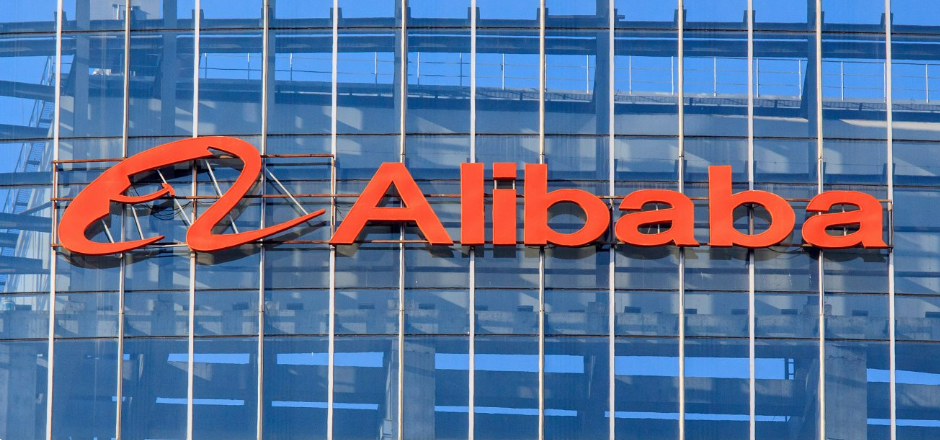
Daniel Rogers
Jul 07, 2022 16:14

Cruise stocks should not be written off. According to market research company Statista, the cruise sector is anticipated to revive this year and reach $57 billion in annual revenues by 2027.
Cruise operators are cautiously hopeful about 2022 after two extremely challenging years, with reservations for the second part of this year at pre-pandemic levels and new drugs to manage and treat Covid-19 becoming available.
Cruise ship stocks prices have been climbing gradually since December, even though they are still very volatile. Analysts anticipate more increases as the sector's recovery speeds up in the coming months.
Cruise ships took longer to recover compared to other travel-related industries like airline or hotel stocks. Many popular cruise ports did not reopen until late 2021, just in time for Omicron to strike another blow, and this did not help.
When bookings started returning in December 2021, the CDC upped its warning to category 4, or "extremely high," and advised avoiding cruise ships. Another unforeseen snag occurred in 2022 with the Russian invasion of Ukraine, which impacted reservations for Baltic and other European trips.
Despite this, market analysts concur that the long-term outlook is favorable. Even passengers who cancel their reservations are just rebooking for a later date in the year for Alaska and the Caribbean, where demand is still high. According to Carnival Corp., reservations for the second half of 2022 have surpassed those for 2019, and Royal Caribbean has reported bookings for 2022 that are almost on par with those for 2019. P&O's 2022 Caribbean cruise sold out in less than six hours.
Despite falling short of 2019's 29.7 million passengers, passenger volume is predicted to increase by 96% YOY (year on year) to 13. million in 2021. Global expenditure across 60 key cruise markets increased by 65% YOY to $19.4 billion in revenue.
Leading cruise companies have been putting much effort into accelerating digital transformation and integrating new technology to get access to data-driven insights, raise hygiene standards, and enhance the guest experience.
Most cruise guests now check-in digitally by taking selfies, scanning their passports, and finishing the procedure. Many cruise ships have implemented the Internet of Things (IoT) connectivity for intelligent wristbands. These wristbands track passengers' movements to ease congestion and enable contactless functions like ordering room service, making reservations for restaurants or spa services, opening cabin doors, and making payments for onboard purchases.
While the annual "Wave" booking season has not had the same impact as before the epidemic, their efforts are paying off; it is still considerable.
With so much going on, more investors are thinking about buying stocks in cruise lines and other travel-related businesses. Here are seven encouraging cruise line stocks to investigate in the cruise industry.
People worldwide have been eagerly anticipating the opportunity to continue their cruise holidays. Investors may view this willingness as a hint that, despite current economic uncertainties and persistent COVID difficulties, the cruise sector may be an excellent location to invest.
Before purchasing stock, astute investors focus on companies and industries that they are familiar with, fully comprehend, and have researched extensively. Learning about business models and how they stack up against competitors in a given sector is a crucial component of sound investment.
Well-educated investors have an advantage over other investors since they understand the cruise ship industry and how well-positioned the cruise lines are.
Recently, the leisure travel business Carnival has attracted attention. In essence, the business is a cruise line that offers trips to all cruise locations across the globe. It encompasses Asia, Australia, Europe, and North America. As of 10:12 a.m. ET, CCL stock is trading at $27.74 and has increased by more than 30% year. Last week, the business said Costa Cruises had launched its Mediterranean cruise itineraries for 2021.
In preparation for reopening by July, it has also been making significant plays. To ensure client safety, the corporation will include improved health and safety protocols for all facets of its cruise experience. This is important because as the globe begins to recover, organizations like Carnival must put the public's health first while regaining consumer trust and promoting the travel and tourism sectors' contribution to the global economic recovery. Additionally, Carnival said this week that the Barbados government had joined forces with its Seabourn ultra-luxury cruise line to resume passenger sailings. Will you think about purchasing CCL stock in light of all these reopening moves made by the business?
Norwegian, the third-largest cruise company in the world, has a fleet of 17 ships that often go to more than 490 locations worldwide. The cruise operator intends to increase its fleet by nine ships by 2027.
According to TheStreet, Norwegian still has COVID vaccination and testing standards, much like its rivals, and this status will not change very soon. This means that both passengers who prioritize COVID measures when traveling and non-compliant consumers who opt for alternate modes of transportation place all three cruise companies on an equal footing.
The cruise line said in a press statement that it had attained a significant milestone during the first quarter of the year when the final ship in its fleet started sailing again. Despite the strong demand, it is still trying to increase occupancy and intends to generate record net yields for 2023. According to InvestorsObserver, analysts have a "buy" recommendation and an average $25.22 price objective for the company.
Even investors who know that travel stocks are a secure investment may have uncertainty over their ability to select the best-performing investments and steer clear of those that will not succeed—because of this, investing in a specialized cruise line ETF or a more general travel ETF like Defiance's CRUZ might be a good choice.
You may spread a single investment throughout the travel sector with a travel ETF, encompassing the top cruise line stocks, airline stocks, hotel stocks, and other stocks with a growth potential when the industry as a whole recovers.
CRUZ does this by following the BlueStar Global Hotels, Airlines, and Cruises Index, which includes stocks from the hotel, airline, and cruise business sectors. CRUZ is now trading at $19.32 and has an expense ratio of 0.45%.
Since its foundation in 1969, Royal Caribbean Cruises has developed into five unique brands with 63 cruise ships in service. The business provides consumers with around 1,000 unique locations throughout its many itineraries.
The second-largest cruise ship company in the world, Royal Caribbean offers services on six continents. Before COVID, the corporation generated around $11 billion yearly revenue and now has a $14.8 billion market valuation. For 2023, current predictions place Royal Caribbean's income higher than pre-COVID levels.
On May 5, 2022, Royal Caribbean released first-quarter profits. The figures were relatively poor, demonstrating that the firm is on the road to recovery. Adjusted earnings-per-share were $4.57 in the red, below projections by nine cents. Revenue increased from virtually nothing in the first quarter of last year to $1.06 billion, although it fell short of projections by $90 million.
The business gave positive commentary for the remainder of 2022 and beyond, noting that it has made progress in its protracted recovery from the COVID suspension.
At the end of the first quarter, the business had put 54 of its ships back into service under its five brands, accounting for roughly 90% of its worldwide capacity. About 800,000 visitors traveled with the company's brands in the first quarter, and that period also witnessed a record total revenue per passenger cruise day. This is a crucial revenue indicator that assesses a cruise line's capacity to increase pricing for each passenger. Therefore the news is generally encouraging.
In April 2022, Royal Caribbean experienced positive operational cash flow, a turning point for the corporation that has suffered since the COVID epidemic. On the road to recovery, the management anticipates that all fleets will be fully operational by the beginning of the summer of 2022.
Bookings grew every week consecutively throughout the period, surpassing those in the fourth quarter of 2021. Additionally, bookings were "substantially higher" throughout each period compared to the exact times in 2019, prior to COVID. That reflects the strength the business anticipates for the remainder of this year and into 2023. Based on this, management stated that it anticipates load factors to keep rising this year, exceeding 100% by the end of 2022.
All quarters for 2023 are currently reserved with volumes within historical ranges but at record prices. In addition to increasing sales and generating cash flow, this will also assist with margins. Based on these variables, Royal Caribbean anticipates operating financially in the second half of 2022.
Royal Caribbean keeps improving the efficiency of its fleet by buying newer, fuel-saving ships, promoting onboard spending, and selling off its older ships. In addition to having direct advantages for shareholders, this endeavor will assist the company in meeting its objectives for environmental preservation. Increased sales and margins will result in more significant profits and cash flow if all else is equal.
Based on an earnings power of $8.00 per share, we predict Royal Caribbean will increase its profits per share by 7% over the next five years. Royal Caribbean is exposed to the standard hazards cruise line operators face, such as fuel prices and currency sensitivity.
Although Royal Caribbean hedges around 50% of its fuel expenses, there is still a chance that currency fluctuations might have a good or negative influence on earnings at any one moment, depending on where the US Dollar is traded. The earnings of Royal Caribbean are considered sensitive because of the continued high oil and fuel costs.
Along with the rest of the industry, Royal Caribbean's price-to-earnings ratio has decreased since the COVID epidemic. Due to this, the company is now undervalued, which presents what we think to be an opportunity for longer-term investors who can cope with the inherent risk of holding a stock with a connection to travel at this time.
Compared to our estimate of fair value, which is nine times profits, the current price-to-earnings ratio of 7.3 is favorable. The increasing valuation multiple might result in a 4.4 percent tailwind to yearly total returns over a five-year timeframe.
Due to the additional dilution and debt the operators took on to survive COVID, it should be noted that our fair value estimations for the cruise lines are extremely low by historical standards. Additionally, even if the prognosis is favorable now, there is much uncertainty.
The valuation tailwind and 7 percent earnings growth appear to drive Royal Caribbean's overall outlook for 11.7 percent total returns. There is not a dividend, and we will not be seeing one for a while.
Third-largest in terms of cruise numbers worldwide is the Norwegian cruise line. The fleet of 28 ships owned by the corporation has about 59,150 berths. These companies also provide itineraries to more than 490 locations throughout the world. By 2027, it also intends to introduce nine more ships as of 10:16 a.m. ET, NCLH stock is trading at $30.52 and has increased by more than 25% year to date. The firm disclosed the next stage of its eagerly anticipated plan to begin cruising outside of the United States this summer on Wednesday.
Oceania Cruises, a firm division, will resume operations in August with sailings to Scandinavia and Western Europe. Regent Seven Seas Cruises will do the same in September, departing from the United Kingdom. Along with the company's comprehensive, multi-layered SailSAFE health and safety policy, all first trips will be operated with fully immunized passengers and crew. The program's universal coronavirus testing before departure is one of its essential components. Will you think about investing in NCLH stock in light of that?
Despite being a tiny company, Lindblad has a sizable audience in its particular sector and receives 40% of its bookings from returning clients. Its primary concentration is on adventure excursions to far-flung locations like the Galapagos Islands, Antarctica, and French Polynesia, which are anticipated to pique post-covid travelers' yearning for adventure and the expanding market for ecotourism.
Even though passenger numbers are still below pre-pandemic levels, Lindblad's net loss shrank from $27.8 million in Q3 2020 to $25.7 million; its revenue has increased by more than 63 times, and reservations are already up by 51 percent YOY. According to the corporation, revenue would soar by 160.4 percent in 2022.
The Walt Disney Company is last but not most minor. Yes, most people do not initially think of Disney as a stock for cruise ships. We can understand, given its recent rapid expansion in the streaming sector. The Disney Cruise Line, however, provides Disney with an additional source of income. The most recent declaration from the CDC would provide the business another boost in terms of tourism. The advent of Disney's theme parks might create the ideal storm for the business. Disney should ideally be operating at total capacity in a post-pandemic society. Could investors maintain their upward price pressure on DIS stock as a result?
For starters, Disney has been working hard to be ready for the following cruise itineraries. Disney introduced its newest cruise ship, the Disney Wish, at a virtual event yesterday. The Disney Wish is the sixth ship in the fleet of the Disney Cruise Line specifically. Disney provides experiences based on this ship's renowned Star Wars and Marvel IPs. Disney states that booking trips to the Bahamas and Castaway Cay will begin on May 27. Once more, it seems like the corporation is maximizing the potential of its enormous media holdings. Time will tell if Disney can win over people desperate for travel. Would you still recommend buying DIS stock at this time?
The three leading cruise ship stocks' extraordinarily high predicted rates of return presumptively reflect a long-term return to regular operations. Future returns are also predicted based on their low valuation multiples, which may increase if the coronavirus epidemic is quickly contained.
Naturally, there is no assurance that this will occur in the foreseeable future. Investors should thus continue to anticipate volatility in the extensive cruise line stocks. Based on their reduced prices, these cruise line stocks might be solid buys if they can resume growth, but investors will need to be patient.
We advise investors to have a long-term perspective when analyzing cruise line stocks. We believe Royal Caribbean is the most outstanding cruise line stock available today for long-term income investors in light of these criteria.

Jul 07, 2022 16:10

Jul 08, 2022 15:29